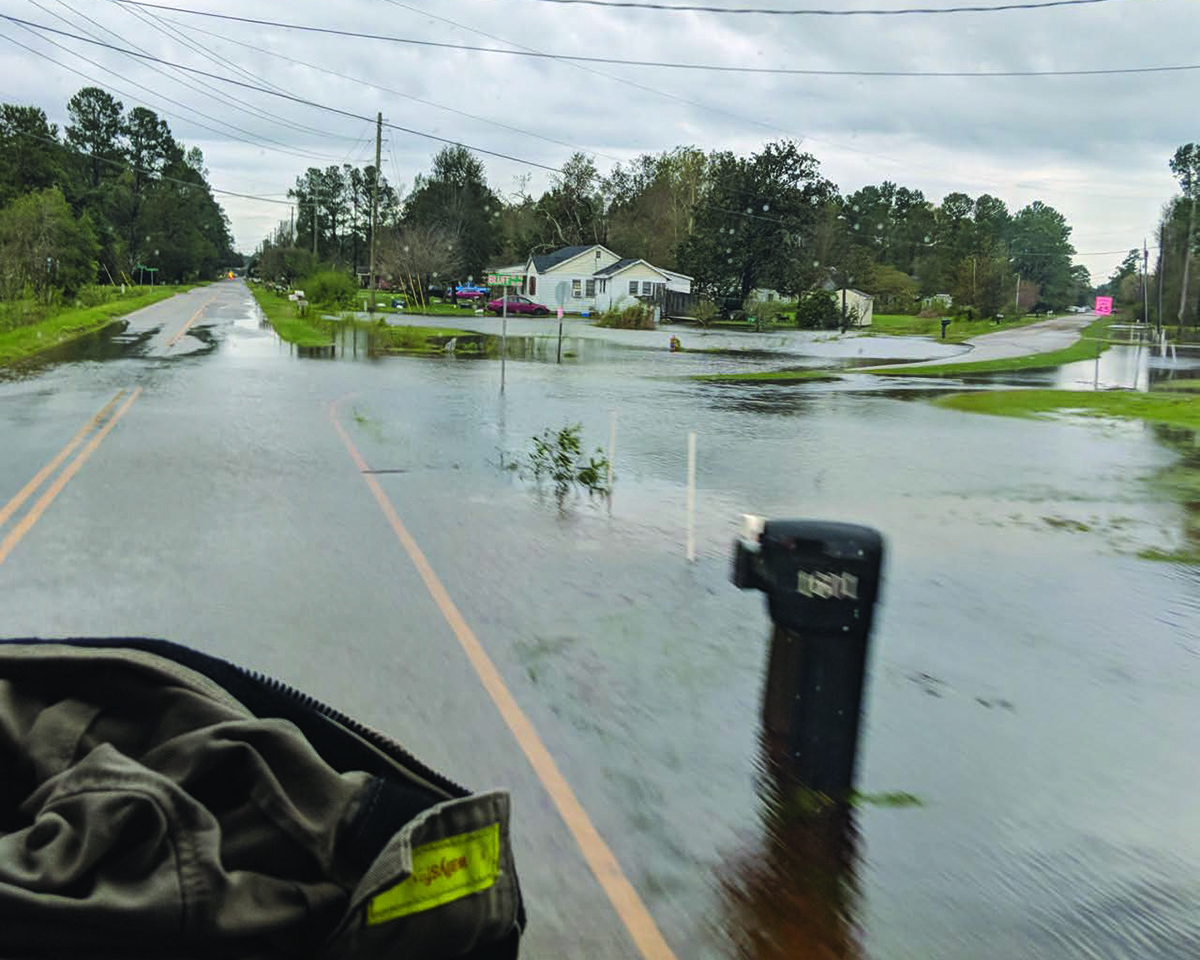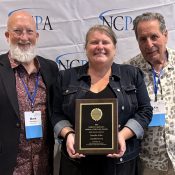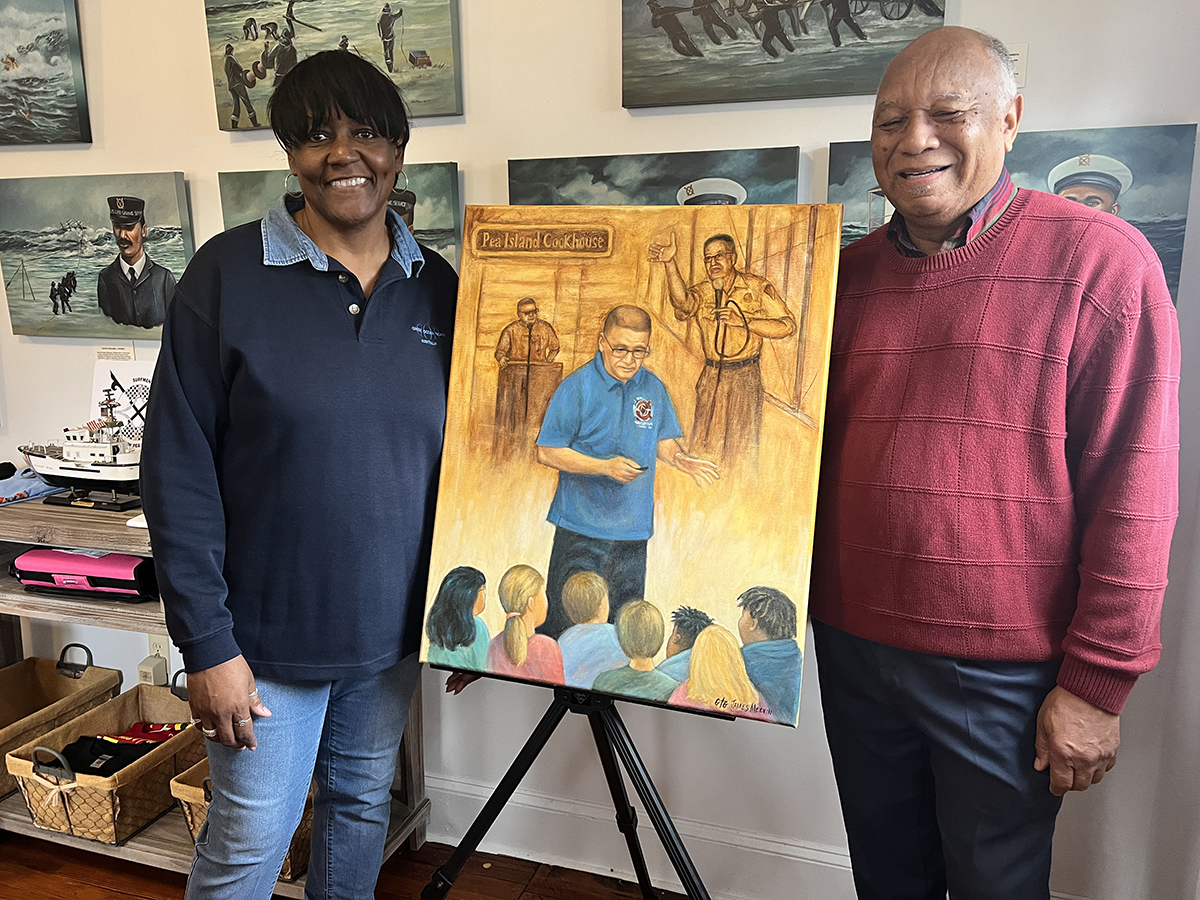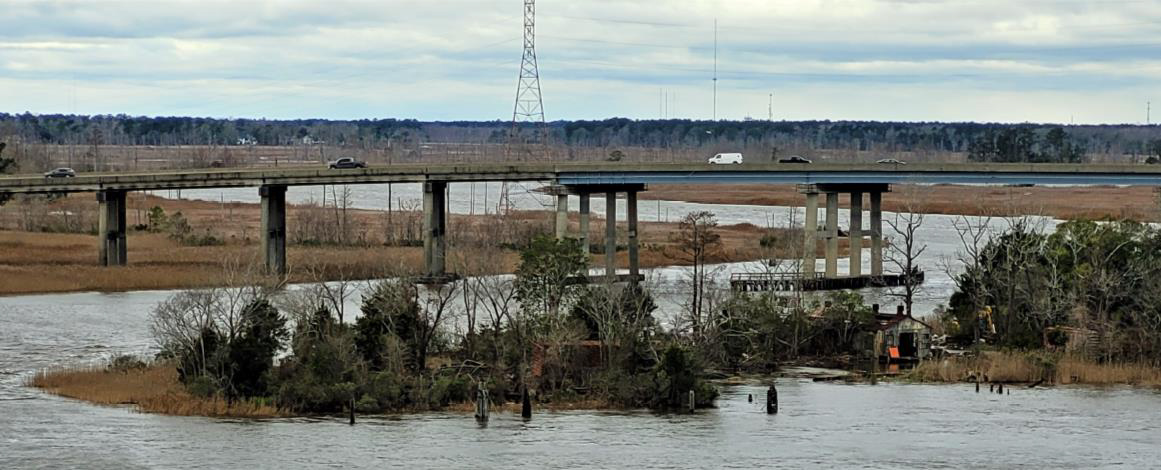
A proposal to strengthen and expand building rules in Leland’s flood zone will not be indefinitely sidelined, proponents of the changes say.
“I’m not going to let this die,” said Leland Councilmember Veronica Carter. “I will bring this up at every single meeting until we get some sort of ordinance.”
Supporter Spotlight
Carter, who also sits on the board of directors of the North Carolina Coastal Federation, which publishes Coastal Review, and fellow Councilmember Bill McHugh in telephone interviews last week expressed disappointment after a majority of the council on July 17 voted to table proposed updates to the town’s flood damage prevention ordinance.
Suggested amendments to the ordinance included extending building regulations to land within the 500-year flood zone, which includes nearly 280 acres, restricting residential construction fill to elevate property out of a flood zone, limiting density in a flood zone to two units per acre, and increasing freeboard, or the height added to base flood elevation, from 2 to 4 feet.
The town’s planning board unanimously supported the amendments, but the proposed changes were met with fierce pushback from pro-development groups, including builders and real estate agents.
The nonprofit Business Alliance for a Sound Economy in a letter reported in Port City Daily last month argued the proposed ordinance amendments would undermine property values, limit homeowners from making improvements to their houses, and impose “major new costs to home ownership in Leland” while doing “virtually nothing to reduce the impact of flooding.”
“Were one of them (houses) to be significantly or completely destroyed for any reason, the homeowner would be personally responsible for the major added expense of elevating the home to the new standard,” the letter states.
Supporter Spotlight
But building in a flood zone is in and of itself an inherent risk, one that is being exacerbated by the strings of coastal storms in recent years that have dumped historic levels of rainfall in the area, proponents of the measure say.
Next month will be the one-year anniversary of the unnamed storm that dumped up to 20 inches or so of rainfall in southern portions of New Hanover County down through Brunswick County over a two-day period.
That storm, widely called Potential Tropical Cyclone 8, surprised the area with flash flooding that washed out roads and inundated homes.
The National Weather Service said the storm approached an event expected to occur, on average, once every 1,000 years.
“It was ugly and if we’re seeing that kind of catastrophic event happening outside of a major hurricane, just some random summer day, I think we need to take a serious look at where and how we’re building and developing in this zone because, let’s not kid ourselves, the more impervious (surface) that you’re building, the more you push that water out,” McHugh said. “Not taking any action to mitigate that risk, to me, is just wildly irresponsible. The idea that these events are remote and rare and some sort of lottery occurrence is just disingenuous.”
As a result of the unnamed storm, areas outside of Leland’s flood zones were swamped, including Stoney Creek Plantation.
“We all know that the bottom line is things are flooding that have never flooded before,” Carter said. “Our flood maps from the federal government are woefully inadequate and outdated.”
Amendments proposed for the town’s flood prevention ordinance do not halt building in flood zones, she said.
“We’re just saying if you’re going to do it, you’re going to take into account it’s going to flood,” she said.
The coastal storm has been just one of a seemingly growing number of significant rain events hitting the state in recent years and exposing more and more flood-vulnerable areas.
Brunswick County officials are also taking notice. The county is commissioning a study on whether to create a stormwater utility. More than 28,000 structures are within the county’s flood zones.
Strengthening building rules within flood zones, McHugh said, is a moral issue, one where elected officials must ensure they are not creating a situation that puts everyone from property owners to emergency personnel in danger.
“When things flood, when things get damaged, the cost of everyone’s insurance goes up. So, if we limit development in danger zones we limit the risk in an area from hurricanes,” he said. “I remain hopeful that we’re going to pass some sort of meaningful change to flood zone development and I think that this is a matter of critical importance to public safety, to the safety of our first responders, to the insurability of the region, and to these folks who are making the largest investment of their lives, which are their homes. You should be able to trust that a home you buy in Leland is built somewhere safe.”
Both councilmembers said the town might benefit from hosting a workshop, one where residents and special interest groups may come together and share their suggestions.
The council is expected to discuss next steps on the proposed amendments during its Aug. 18 agenda meeting. The council’s regular meeting is scheduled Aug. 21.







